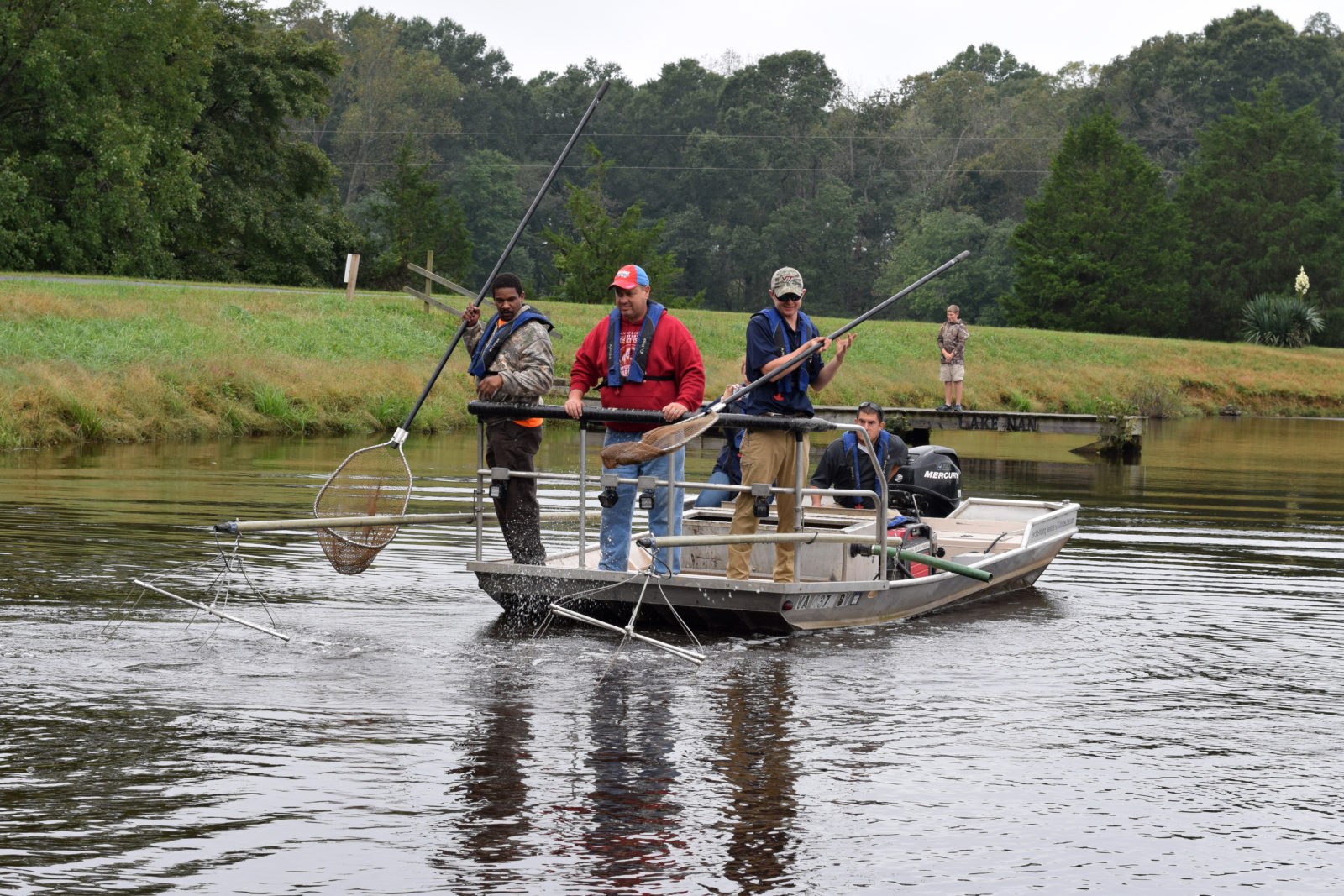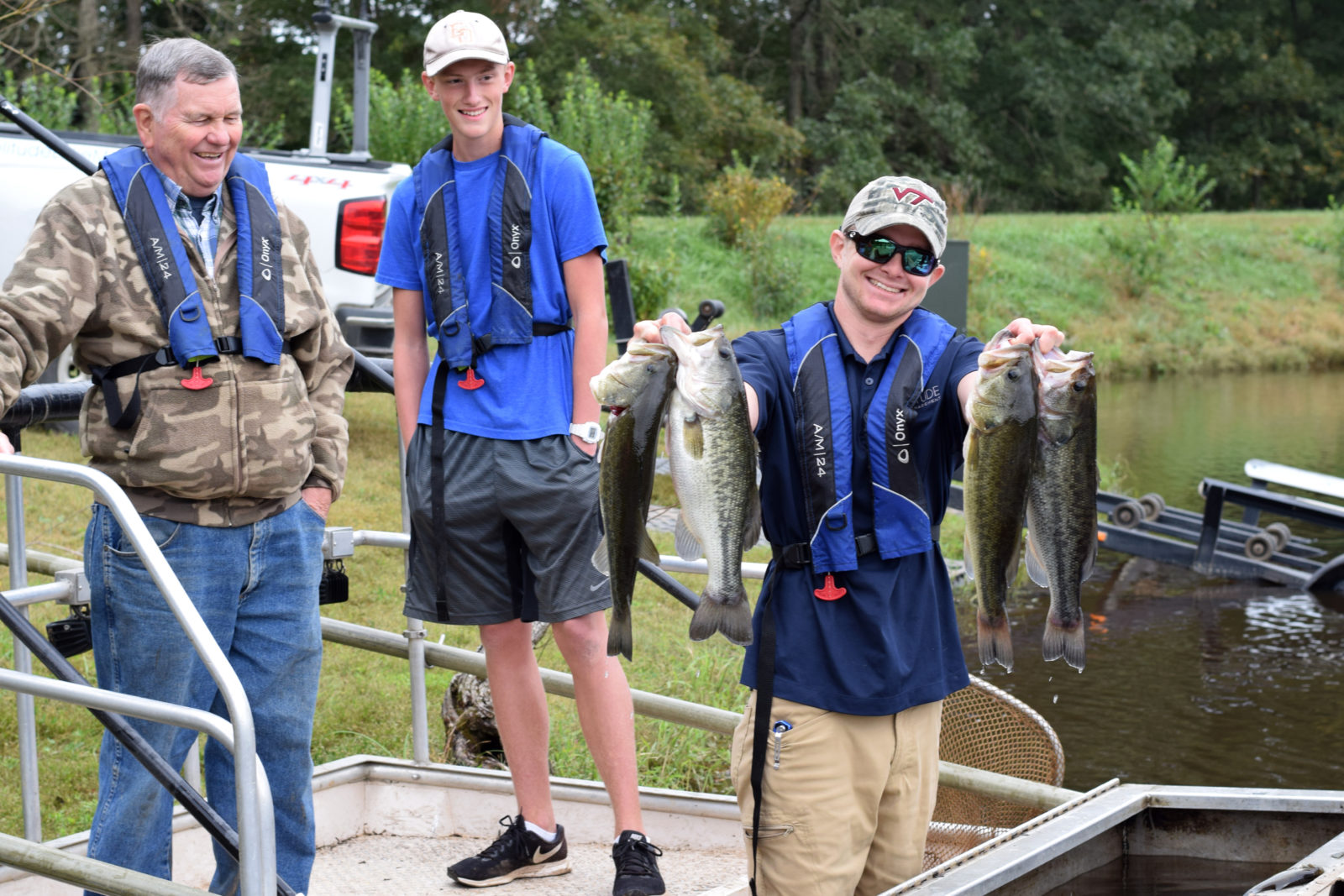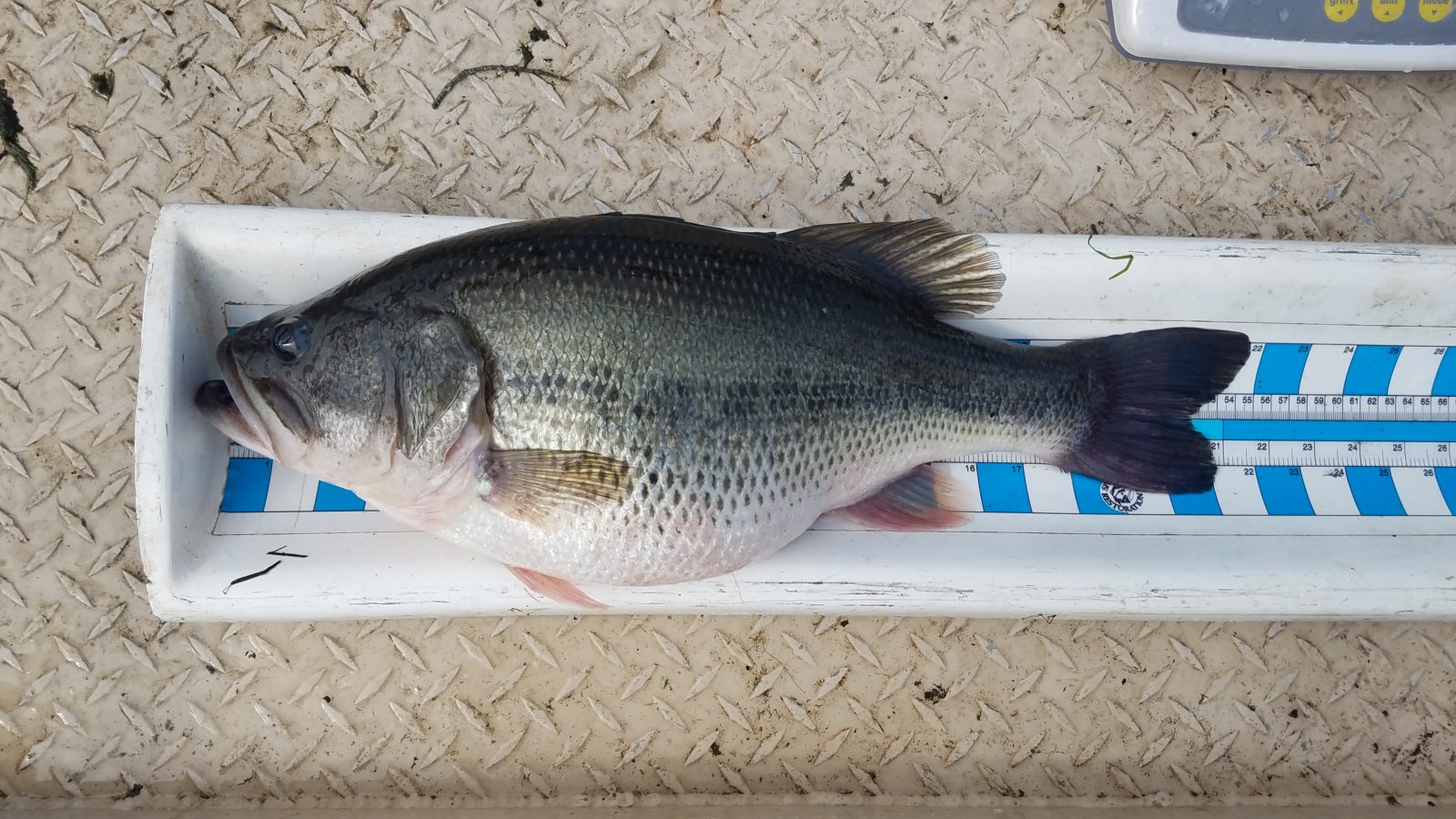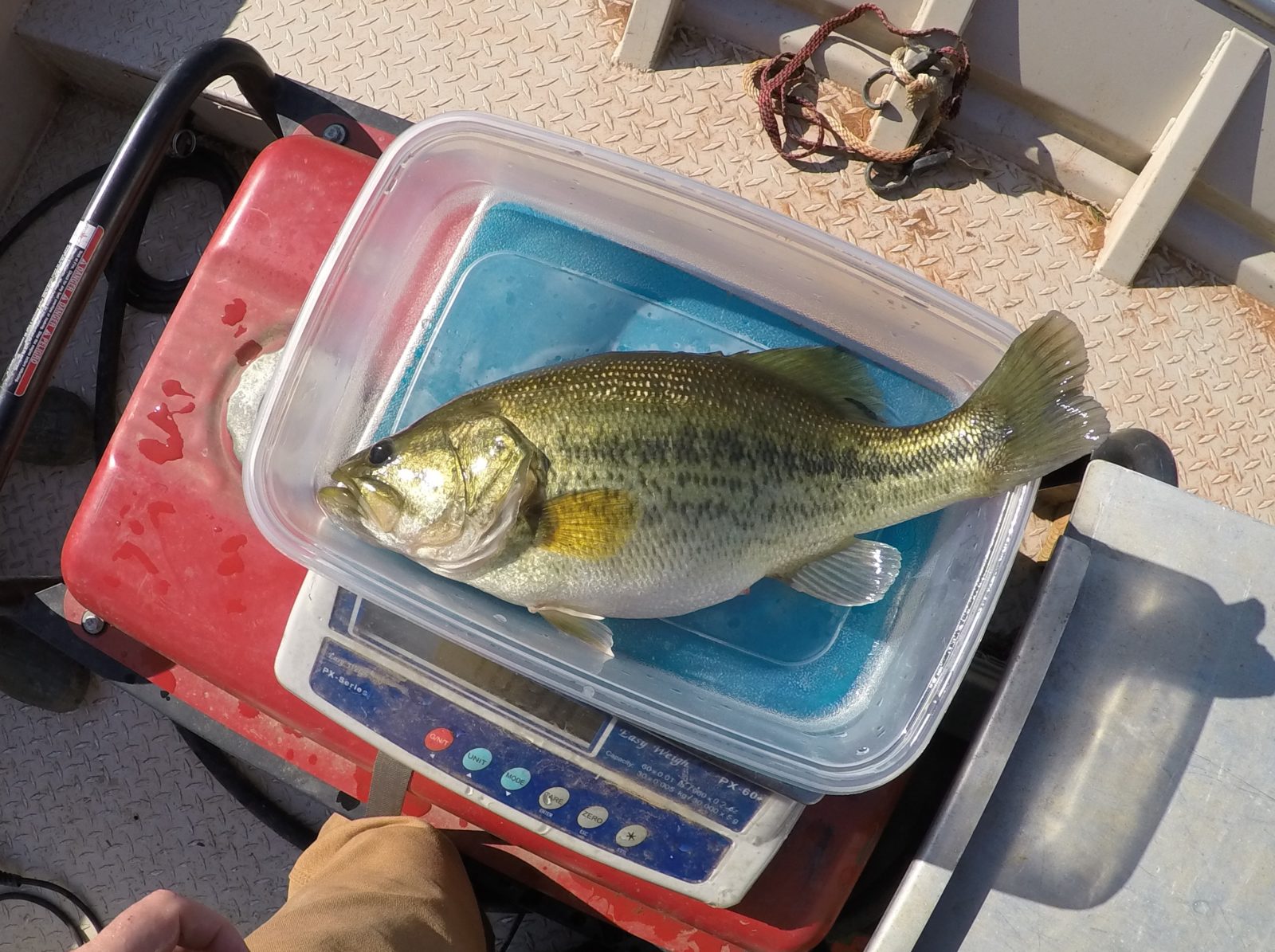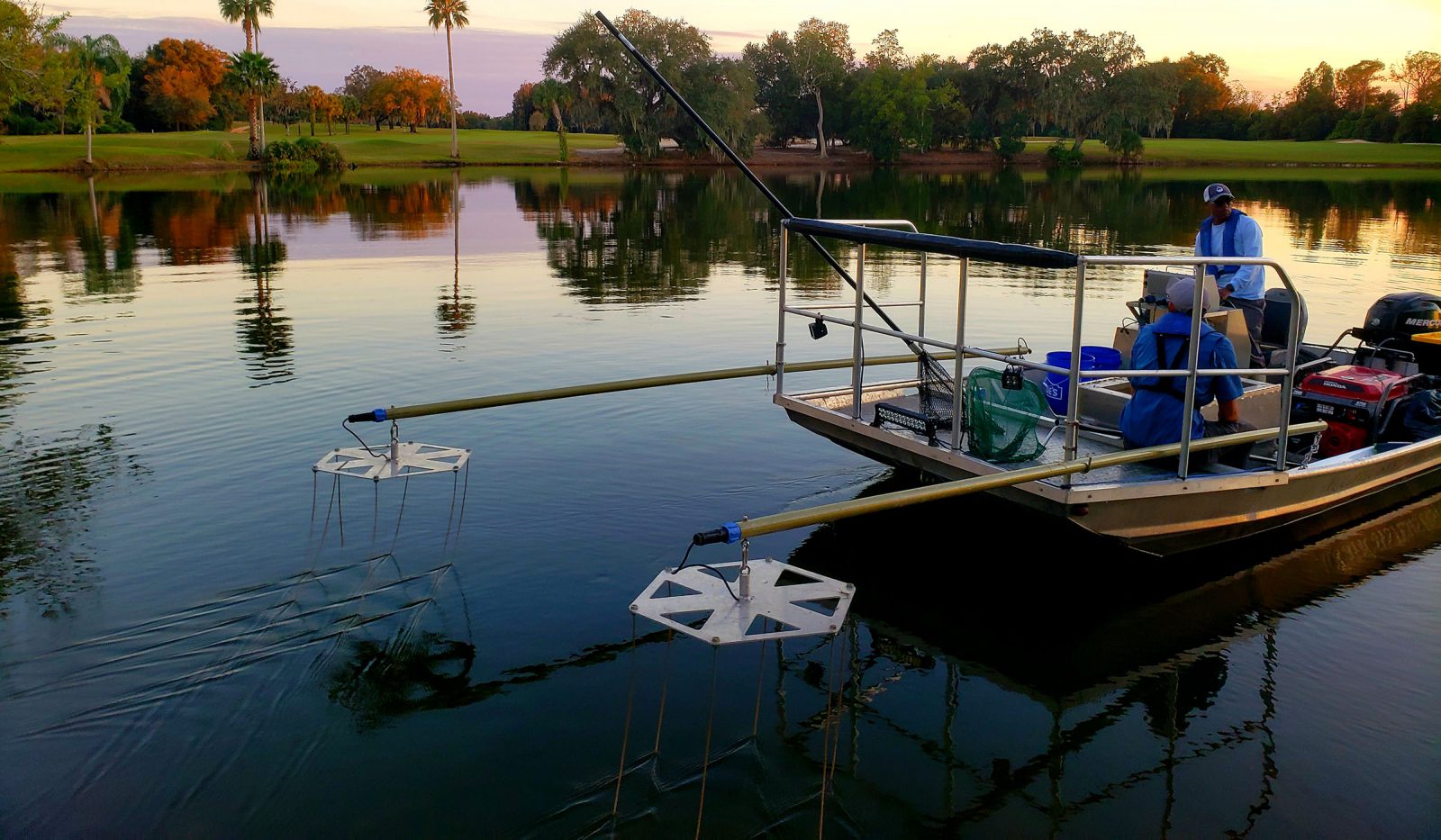
Electrofishing. How Does it Work?
What is Electrofishing?
As part of a fisheries survey, some fisheries biologists use a sampling technique called electrofishing (known to some as electroshocking) to collect fish population data allowing more accurate decisions and improved fisheries management strategies. Using an electrofishing boat, electricity produced from a generator is converted from alternating current to direct current. It then travels through wires to the bow of the boat and passes from the cathode through the water to the anode.
What is the Electroshocking Process?
The electrical field produced via electrofishing affects a relatively small area of the water in front of the vessel where fish are momentarily stunned and safely collected with special electrofishing dip nets. The fish are placed in a live well on the boat where length and weight data are measured, observations are made and the fish are released, without harm, back into their environment. Safely and temporarily shocking fish with an electrofishing boat helps provide insight to current and future issues, giving pond managers the needed facts to achieve and sustain productivity. In addition to collecting data, undesired species of fish that are captured can be removed from the waterbody.
Why Use Electrofishing?
For lake or pond owners looking to restore a fishery to a balanced state, an initial population assessment with a professional electrofishing boat will provide the needed information to make the improvements. For those looking to create and maintain a trophy fishery, sampling via electrofishing may be required annually or biannually. When developing a fishery, it is important to stay ahead of potential issues. As more is learned about the fish community, fisheries management decisions can be tailored to meet the waterbody’s needs.
Want to Talk to an Electrofishing Expert?
Ready to energize your fish sampling program or want to learn more about how electrofishing benefits your fisheries management approach? Ask the experts at SOLitude Lake Management.








